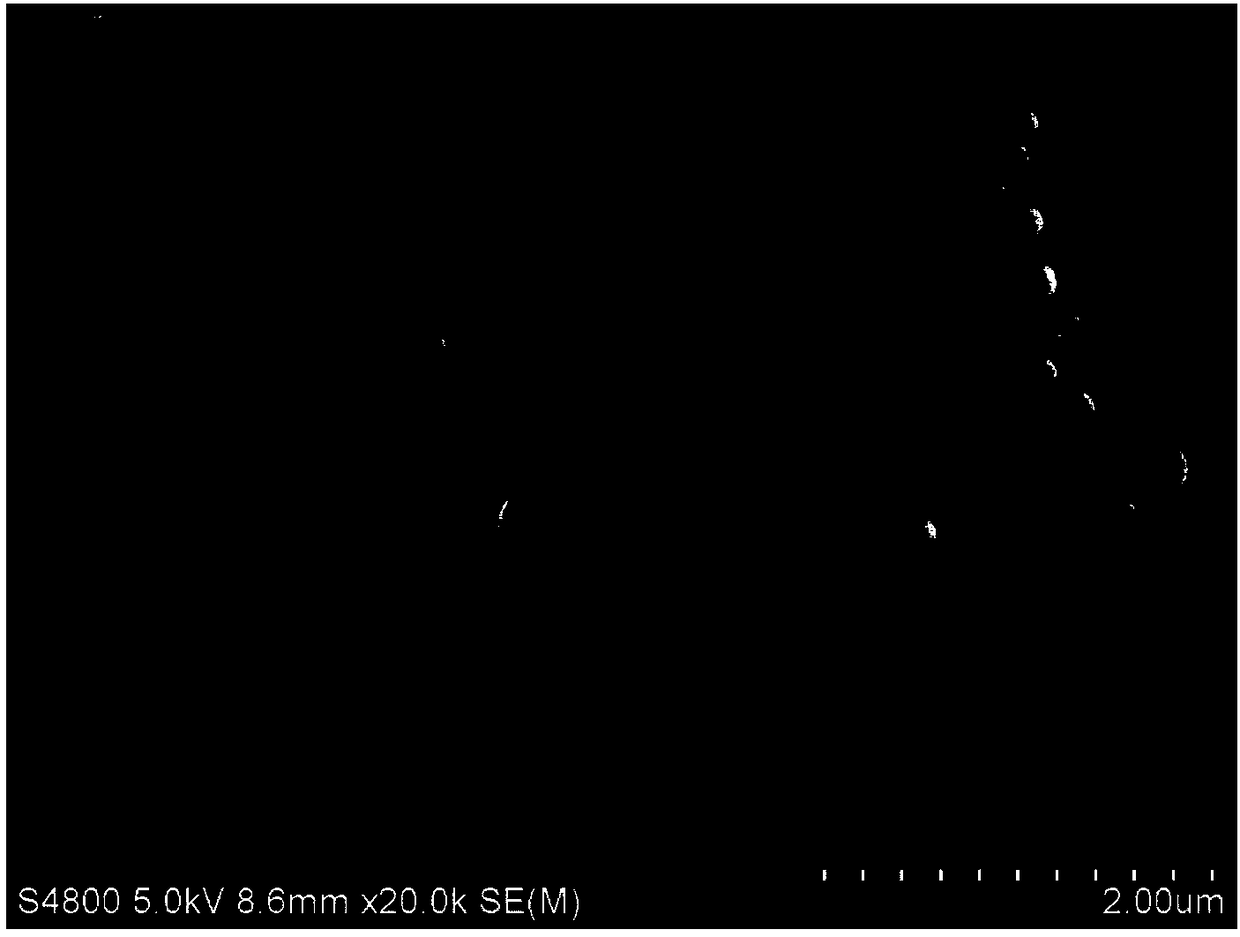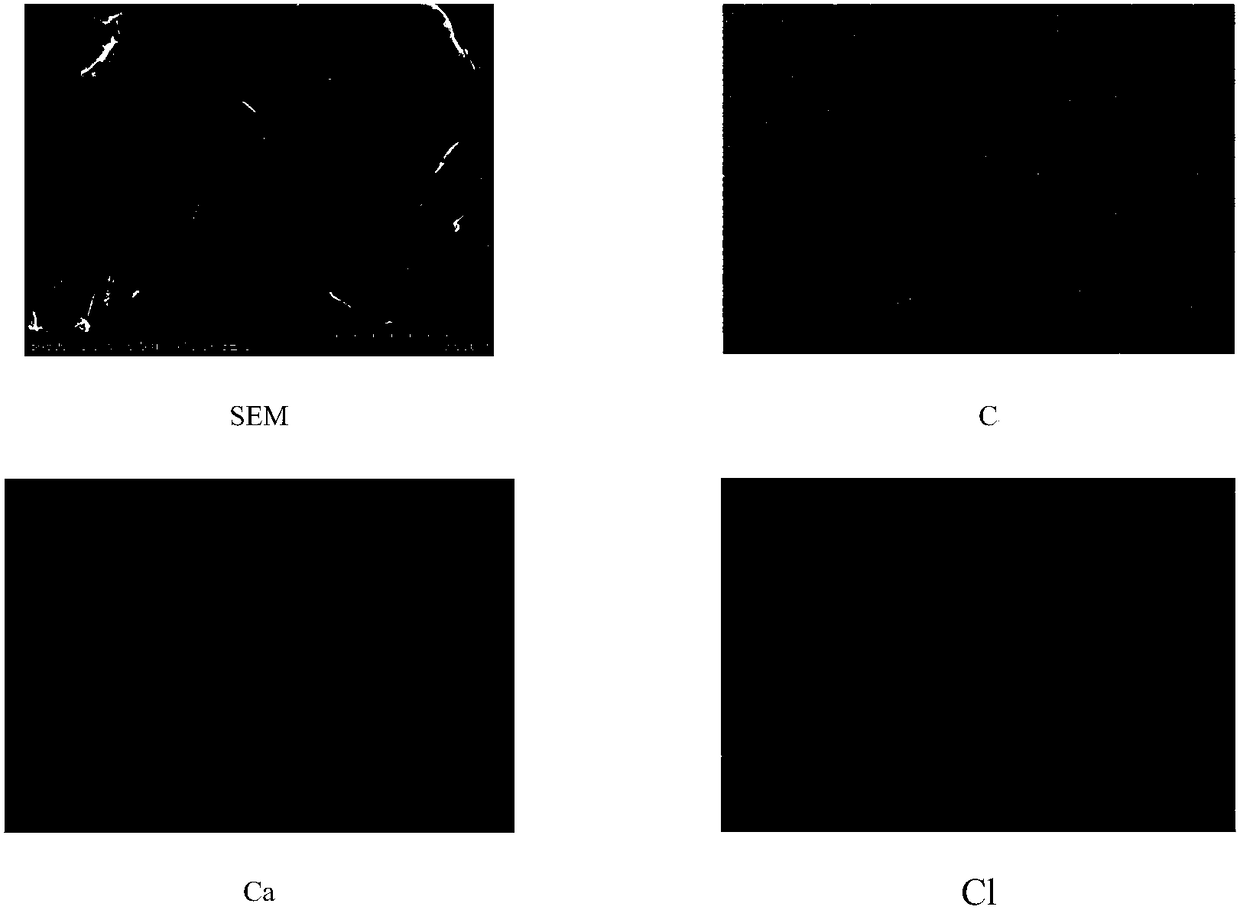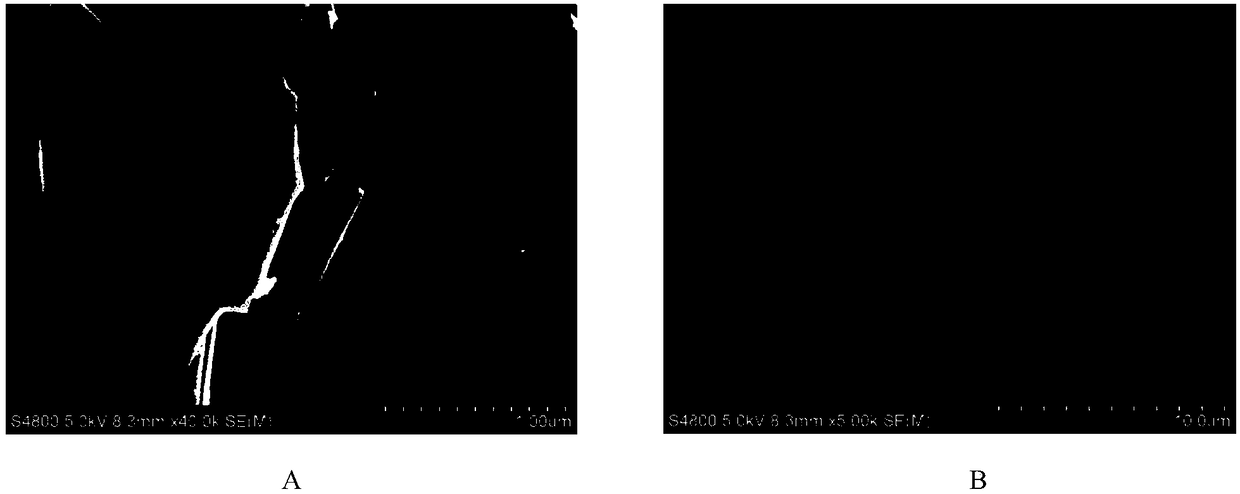Composite material and preparation method thereof
A technology of composite materials and loaded materials, applied in chemical instruments and methods, silicon compounds, other chemical processes, etc., can solve problems such as agglomeration of loaded materials
- Summary
- Abstract
- Description
- Claims
- Application Information
AI Technical Summary
Problems solved by technology
Method used
Image
Examples
Embodiment 1
[0087] In this embodiment, the load material is 24g of calcium chloride, the support frame material is 6g of expandable graphite, the solvent is 100ml of water, and the sugar is 6.16g of sucrose; heat at 700°C for 2 minutes in an oxygen-free environment to treat the expandable graphite as Expanded graphite; dissolve calcium chloride and sucrose in water at 50°C and stir evenly to obtain an impregnating solution; use the normal pressure equal volume impregnation method to impregnate graphite in the impregnating solution for 1 hour at a temperature of 55°C, and then form an impregnating material ; At 120°C, blow dry the impregnating material for 12 hours; at a temperature of 550°C, activate the impregnating material in a carbon dioxide atmosphere for 2.5 hours, then take it out and cool it to room temperature in a drying dish to obtain a powder composite material. The composite material can be used to adsorb methanol, ethanol, ammonia and water. The supporting framework of this ...
Embodiment 2
[0089] In this example, the load material is 24g of calcium chloride, the support frame material is 6g of expandable graphite, the solvent is 100ml of water, and the sugar is 12g of glucose; heat at 800°C for 2 minutes in an oxygen-free environment, and the expandable graphite is treated as expanded Graphite: Dissolve calcium chloride and sucrose in water at 50°C and stir evenly to obtain an impregnating solution; use an equal-volume impregnation method under normal pressure to impregnate graphite in the impregnating solution for 1 hour at a temperature of 55°C, and then form an impregnating material; At 120°C, blow dry the impregnating material for 12 hours; at 650°C, activate the impregnating material in a nitrogen atmosphere for 1.5h, then take it out and cool it to room temperature in a drying dish to obtain a powder composite material. The composite material can be used to adsorb methanol, ethanol, ammonia and water. The supporting framework of this type of composite mate...
Embodiment 3
[0091] In this embodiment, the load material is 60g lithium bromide, the supporting frame material is 50g copper foam, the solvent is 50ml water, and the sugar is 20g pullulan; the foam copper is cut into the required shape, and the oxide layer is removed; the lithium bromide and starch are dissolved In normal temperature water, and stir evenly to obtain impregnating liquid; adopt normal pressure excess impregnation method, impregnating temperature 80°C, this temperature makes starch gelatinization, soak foam copper in impregnating liquid for 1 hour, and then remove to form impregnating material; , ventilated and dried for 2 days; the impregnated material and the heat exchange wall surface were coated with brazing filler metal with a melting point of 350°C, and pressed tightly, and placed in a vacuum furnace for 1 hour at a temperature of 450°C, and the activation and vacuum brazing processes were completed at the same time to form a composite material- The heat exchanger is in...
PUM
| Property | Measurement | Unit |
|---|---|---|
| The average thickness | aaaaa | aaaaa |
| The average particle size | aaaaa | aaaaa |
| The average thickness | aaaaa | aaaaa |
Abstract
Description
Claims
Application Information
 Login to View More
Login to View More - R&D
- Intellectual Property
- Life Sciences
- Materials
- Tech Scout
- Unparalleled Data Quality
- Higher Quality Content
- 60% Fewer Hallucinations
Browse by: Latest US Patents, China's latest patents, Technical Efficacy Thesaurus, Application Domain, Technology Topic, Popular Technical Reports.
© 2025 PatSnap. All rights reserved.Legal|Privacy policy|Modern Slavery Act Transparency Statement|Sitemap|About US| Contact US: help@patsnap.com



